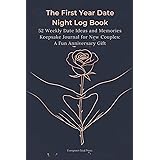Have you ever wondered how wedding celebrations differ across cultures? The video above offers a fantastic glimpse into some key distinctions between Korean weddings and American weddings, highlighting fascinating cultural insights. While the fundamental joy of two people uniting remains universal, the customs, venues, and even the giving of gifts can paint a remarkably different picture. Let’s delve deeper into these captivating differences and explore what makes each tradition unique.
Korean vs. American Wedding Venues: A Study in Contrasts
One of the most immediate differences pointed out in the video is the choice of venue. In Korea, it’s very common for weddings to be held in dedicated wedding halls or elegant hotel ballrooms. These venues are designed for efficiency, often hosting multiple ceremonies on a single day. Think of them as specialized event spaces equipped with everything a couple might need, from beautifully decorated chapels to reception areas for the post-ceremony meal.
Wedding halls in Korea are often streamlined, offering packages that include photography, floral arrangements, and even gowns. This integrated approach can make planning incredibly convenient for couples, reducing the stress of coordinating numerous vendors. In contrast, American weddings often embrace a far wider array of locations. From grand ballrooms and rustic barns to scenic outdoor spaces and even intimate backyard gatherings, personalization is often a top priority. Couples frequently choose venues that reflect their personalities or love story, leading to a vast spectrum of unique settings.
This difference speaks volumes about cultural priorities. Korean venues prioritize efficiency, elegance, and a clear path for guests to celebrate the couple. On the other hand, American venues often emphasize customization and creating a bespoke experience that is highly personal to the couple, sometimes leading to more elaborate planning and higher costs associated with individual vendors.
The Reception Experience: An Essential Difference
Perhaps one of the most surprising contrasts for many is the presence—or absence—of a traditional reception. As mentioned in the video, many Korean wedding traditions do not include the extensive reception elements common in the US. You won’t typically find a first dance, a live DJ, or lengthy speeches and toasts. Instead, the focus often shifts to the solemnity of the ceremony itself, followed by a communal meal.
The “amazing course meal” mentioned is a key component. Rather than a lengthy party, Korean wedding guests are usually treated to a high-quality, often elaborate, meal immediately after the ceremony. This might take place in a separate dining hall within the wedding venue. While it’s a time for guests to eat and socialize, it’s generally a more subdued affair compared to an American reception, which can often last for several hours with dancing, open bars, and various entertainment segments. The atmosphere in an American reception is typically one of jubilant celebration, encouraging guests to let loose and enjoy themselves well into the evening.
This distinction highlights a differing approach to post-ceremony celebration. Korean weddings tend to value the ceremonial aspect and the provision of a good meal for guests as a gesture of gratitude. American weddings, by contrast, often extend the celebration into a large-scale party, emphasizing entertainment and a festive atmosphere where guests can celebrate alongside the newlyweds.
Gifts and Generosity: Cash vs. Registry
Another significant divergence lies in the custom of giving gifts. In the United States, a gift registry is a common practice. Couples create lists of desired household items, from kitchenware to home decor, at various retail stores. This helps guests choose gifts that the couple genuinely needs to set up their new home. Often, guests will bring gifts to pre-wedding events like bridal showers or directly to the wedding itself.
However, in Korea, the tradition is almost entirely different. As the video highlights, guests typically give cash to the couple. This cash gift, known as chuk-eui-geum (축의금), is usually presented in a crisp white envelope at a designated reception table upon arrival. The amount can vary depending on the guest’s relationship with the couple, but the intention is clear: to provide practical financial support. This money often goes towards significant expenses like the couple’s honeymoon, a down payment on a new home, or simply helping them manage the initial costs of married life.
The underlying philosophy behind these gifting customs is quite telling. The American registry system traditionally helped couples furnish a home, a practice rooted in historical norms where couples often started with very little. The Korean cash gift system reflects a more modern, practical approach, recognizing that financial assistance is often the most valuable form of support for newlyweds in today’s economy. It offers flexibility and acknowledges the substantial costs associated with starting a new life together.
Beyond the Big Three: Other Noteworthy Differences
While the video touches upon three major distinctions, there are many other fascinating elements that set Korean wedding customs apart from their American counterparts. For instance, the duration of the actual ceremony in Korea is often much shorter and more concise than in the US. While an American ceremony might involve multiple readings, vows, and musical interludes, a Korean ceremony can be a swift, focused event, sometimes lasting less than 30 minutes.
Guest attire also presents a subtle difference. While American weddings often involve formal or semi-formal dress codes, guests at Korean weddings might find themselves attending in slightly less formal attire, though still respectful. The bridal party structure can also differ; in Korea, while bridesmaids and groomsmen exist, their roles might be less involved in the planning process or pre-wedding events compared to the extensive duties of an American bridal party.
Understanding these unique cultural wedding traditions offers a richer appreciation for the diversity of human celebration. Whether it’s the efficient elegance of a Korean wedding hall or the personalized charm of an American backyard ceremony, each approach beautifully marks the beginning of a new chapter for the happy couple, rooted in the values and customs of their respective societies. These comparisons truly underscore the beauty of global traditions, offering practical insights for anyone attending a Korean wedding or simply curious about international cultural expressions.











